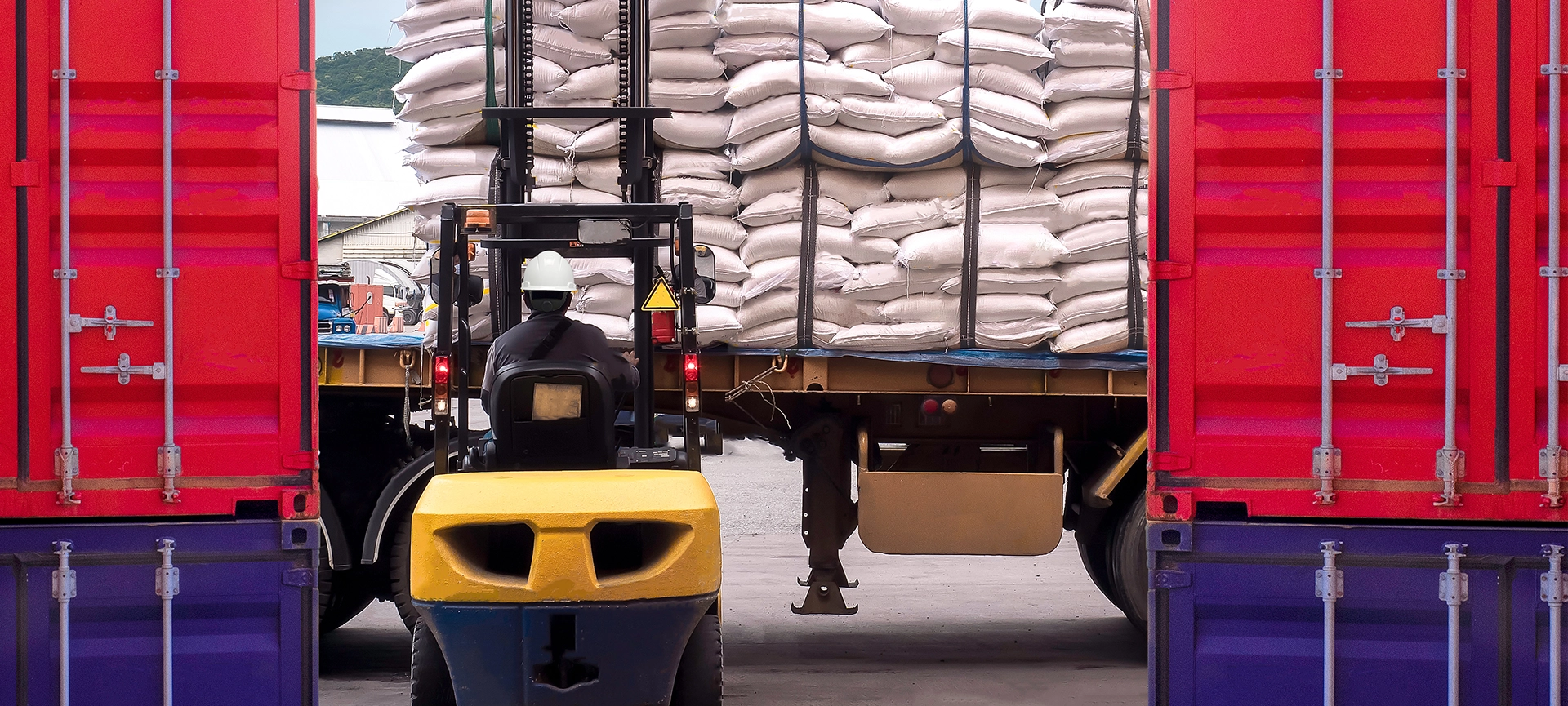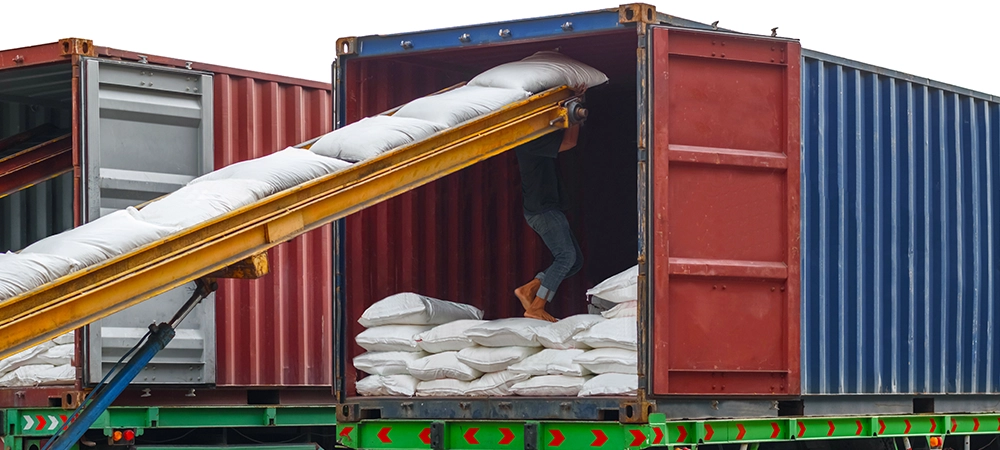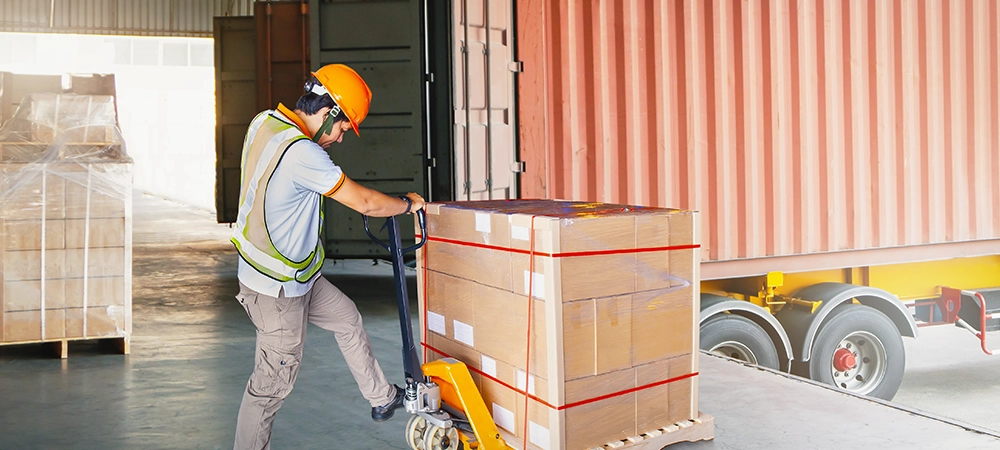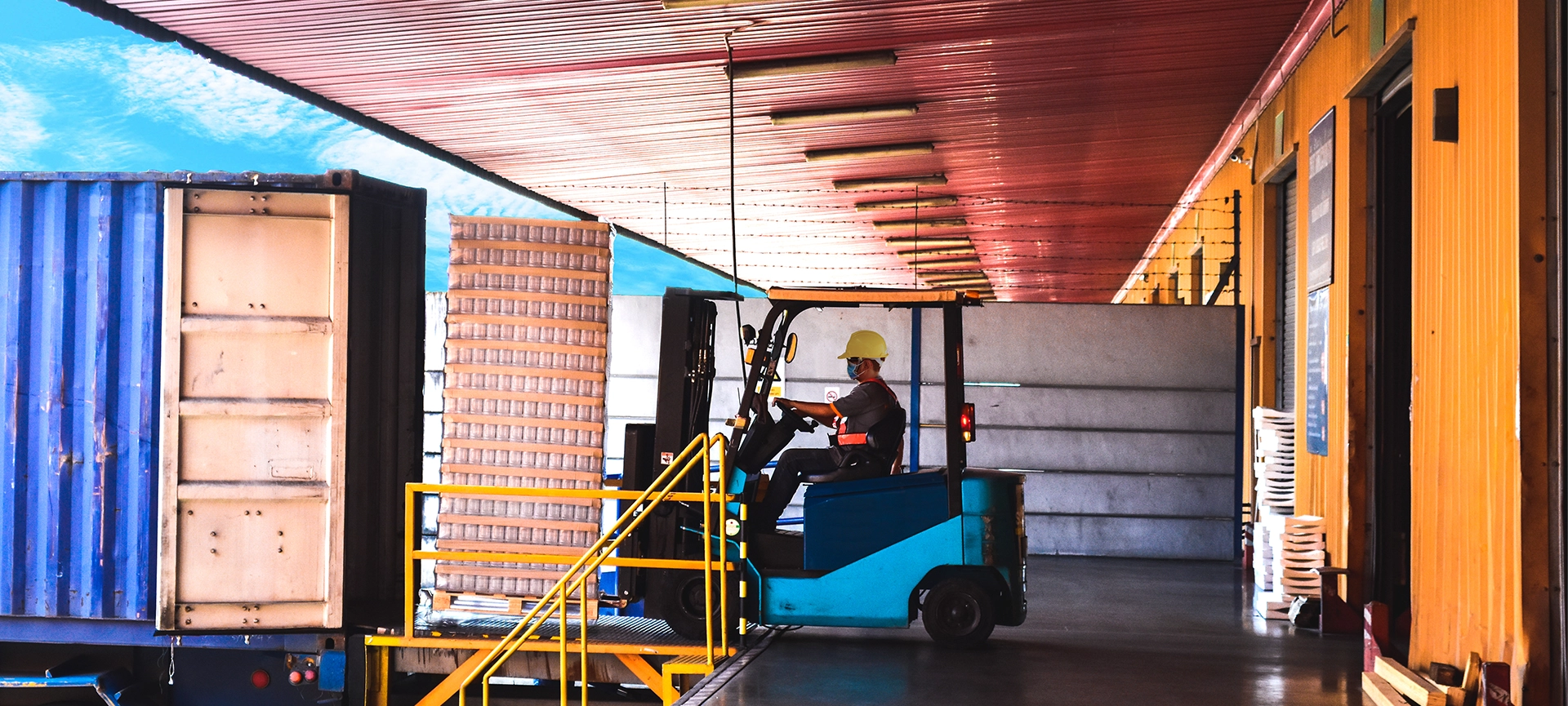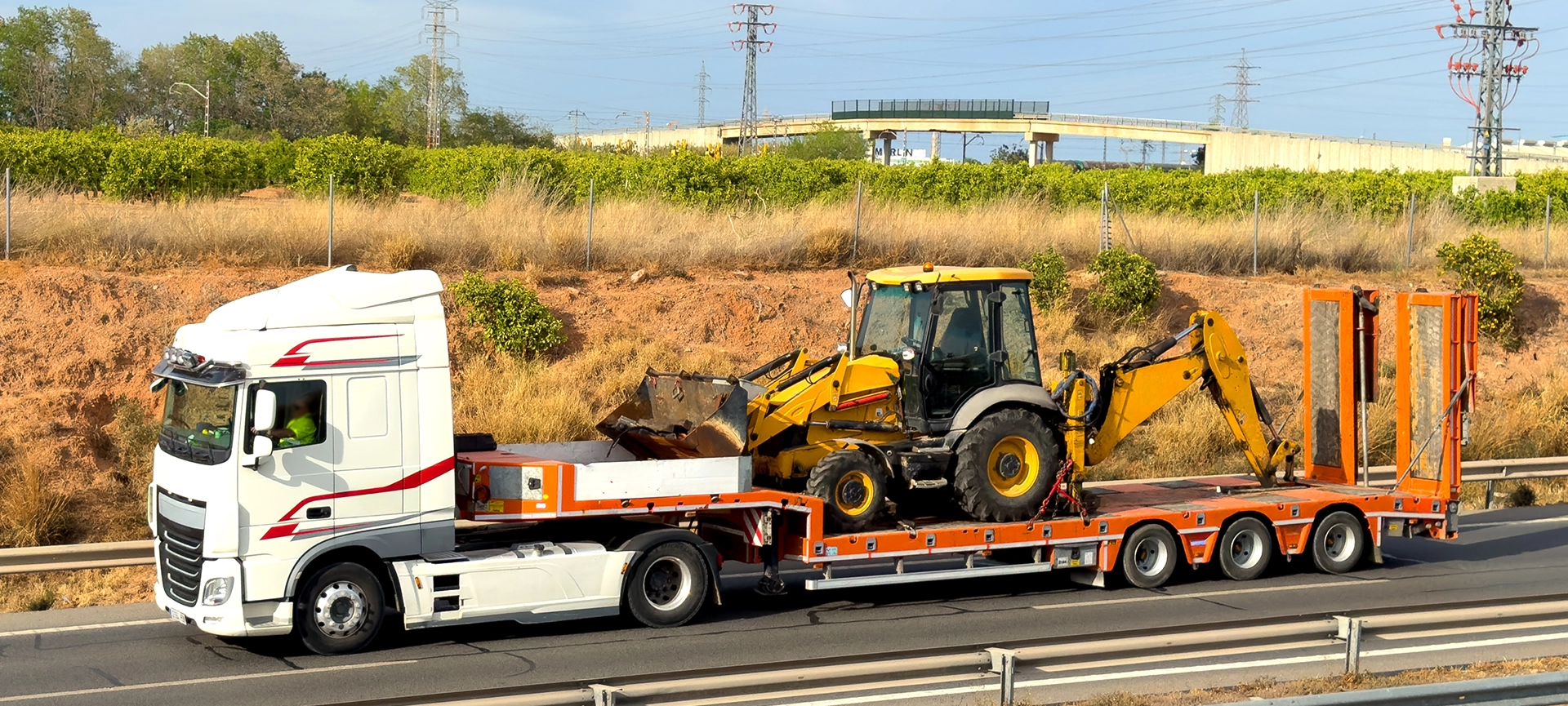Shipping containers are the backbone of global freight movement. Whether transporting goods across the country or over borders, the process begins and ends with two critical logistics operations: stuffing and stripping.
Though they might sound similar, these terms represent opposite functions in container freight handling, and understanding the difference is key to managing time, costs, and cargo security.
This guide breaks down what stuffing and stripping mean, how they’re done, and when each is used, plus how a trusted logistics partner like RoadLinx helps businesses manage both efficiently.
Related Article: What Is Container Stuffing? A Complete Guide for Shippers
What Is Container Stuffing?
Container stuffing refers to the process of loading cargo into a shipping container. It’s typically done at the point of origin, either at a shipper’s facility or a third-party logistics provider’s warehouse. The goal is to maximize space, protect goods from damage, and meet regulatory and carrier requirements.
There are two main types of container stuffing:
- FCL (Full Container Load) Stuffing: One shipper fills the container entirely. It’s sealed and moved as a single unit.
- LCL (Less than Container Load) Stuffing: Multiple shippers share container space. Their cargo is consolidated into one container, which is later deconsolidated at the destination.
Container stuffing includes several steps:
- Inspection of the Container: Check for structural integrity, cleanliness, and odours.
- Load Planning: Match cargo dimensions and weights to the container’s internal space.
- Use of Dunnage and Lashing: Secure items using wood blocks, air bags, straps, or nets.
- Documentation and Sealing: Include a packing list, seal the doors, and record seal numbers for security tracking.
What Is Container Stripping?
Stripping is the reverse process: unloading cargo from a container. It’s usually done at the destination warehouse or container freight station (CFS). Like stuffing, it can involve FCL or LCL shipments.
- FCL Stripping: The container is unsealed and emptied at the consignee’s location or designated warehouse.
- LCL Stripping: The container is taken to a CFS, where cargo is deconsolidated and sorted by consignee.
Key steps in container stripping include:
- Seal Verification: Confirm seal number and condition for security and customs.
- Inspection of Contents: Check for visible damage or water ingress.
- Unloading and Sorting: Remove cargo systematically to prevent damage.
- Inventory and Delivery: Match goods to documentation before sending out for final delivery.
Major Differences Between Stuffing and Stripping
| Feature | Container Stuffing | Container Stripping |
| Definition | Loading cargo into a shipping container | Unloading cargo from a shipping container |
| Performed At | Origin (factory, warehouse, port) | Destination (warehouse, container freight station) |
| Shipping Type | Used for both FCL and LCL | Used for both FCL and LCL |
| Purpose | Prepare cargo for secure transit | Retrieve and sort cargo for distribution |
| Security | The seal is applied after stuffing | Seal is verified before stripping |
| Documentation | Packing list, seal record, loading manifest | Delivery order, stripping report, damage notes |
| Equipment Used | Pallet jacks, forklifts, and lashing gear | Forklifts, cutters, unpacking tools |
| Handled By | Shipper or logistics provider (e.g., RoadLinx) | Consignee or logistics provider |
Why the Difference Matters
Knowing the difference between stuffing and stripping can help you:
- Streamline Operations: Choose the right warehouse setup and schedule staff accordingly.
- Plan Better: Anticipate lead times, especially for cross-border freight.
- Avoid Delays: Make sure paperwork matches at both ends.
- Protect Goods: Ensure correct handling to prevent damage.
- Comply with Customs: Stripping locations must meet local inspection protocols.
How RoadLinx Handles Stuffing and Stripping
At RoadLinx, these processes are part of a larger logistics ecosystem that’s built on experience, efficiency, and transparency.
Stuffing Services
RoadLinx prepares containers using warehouse-grade equipment and smart planning software. Whether it’s a full truckload (FTL) or less than truckload (LTL) going into a container, shipments are consolidated and secured according to size, weight, and destination.
- Secure Loading: Use of anti-slip mats, corner protectors, and straps.
- Digital Load Mapping: Ensures optimal space use.
- Paper Trail: Detailed packing lists and seal verification recorded for compliance.
Stripping Services
Upon arrival in Canada or the United States, RoadLinx oversees the safe unpacking of containers at secure facilities or delivers the entire container to the customer’s site.
- Customs Support: Cross-border freight is stripped only after customs clearance.
- Real-Time Tracking: Customers get updates from port to warehouse.
- Damage Checks: Any issues are logged immediately, ensuring fast claim processing.
RoadLinx also offers:
- In-House Warehousing: Temporary storage of stripped goods.
- Distribution Services: Direct delivery from the warehouse to the final destination.
- Expedited Unloading: For time-sensitive shipments.
Related Article: What Is Considered Limited Access for LTL
LCL vs. FCL in Stuffing and Stripping
Your choice of shipping method affects how stuffing and stripping are handled.
- FCL Benefits: Fewer touchpoints reduce the risk of damage and contamination.
- LCL Challenges: Requires consolidation and deconsolidation, adding steps that need careful documentation and handling.
RoadLinx helps you decide between LCL and FCL depending on your volume, urgency, and budget. Either way, you get accurate container loading plans and secure stripping procedures.
Cost Implications
Container stuffing and stripping affect freight charges in different ways:
- Stuffing Costs: Include labour, equipment use, and time spent securing cargo.
- Stripping Costs: Include handling fees, inspection, sorting, and temporary storage.
If using third-party warehousing, these can be additional line items. RoadLinx offers bundled pricing with warehousing and distribution to reduce overall costs and simplify billing.
Related Article: Step Deck vs. Flatbed Trailers: What’s Best for Your Haul?
Risks and Best Practices
Both processes carry operational risks. To reduce issues:
- For Stuffing:
- Don’t overload the container.
- Secure all items to prevent shifting.
- Label packages clearly.
- For Stripping:
- Inspect the container before opening.
- Count and check all items against the packing list.
- Report discrepancies immediately.
Working with an experienced provider helps minimize these risks.
Related Article: Understanding the Different Types of Freight Shipping Services: LTL, FTL, and More
Choose a Partner Who Handles Both
Stuffing and stripping are two sides of the freight-handling coin. One ensures cargo is safe for transport; the other makes sure it arrives intact and ready for distribution. Errors in either process can lead to customs delays, damaged goods, or financial losses.
RoadLinx brings over two decades of cross-border experience, with full-service warehousing, digital tracking, and secure container handling. Whether you’re shipping a full load or just a few pallets, our logistics team ensures that both stuffing and stripping are done right — on time, every time.
Need help with container loading or unloading? Let RoadLinx handle it from dock to door. Call now or request a quote online.

